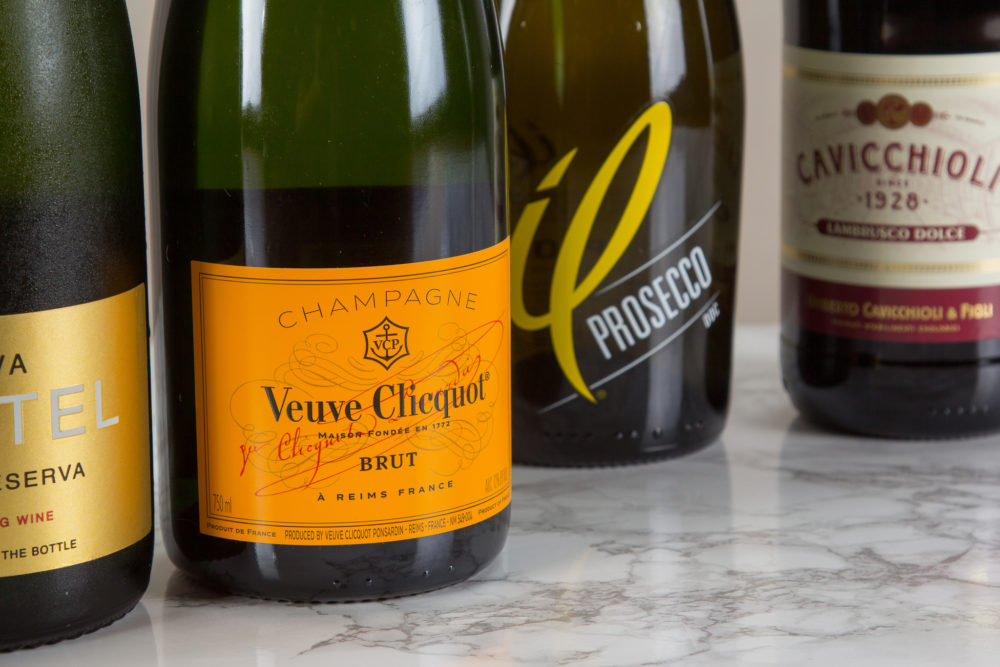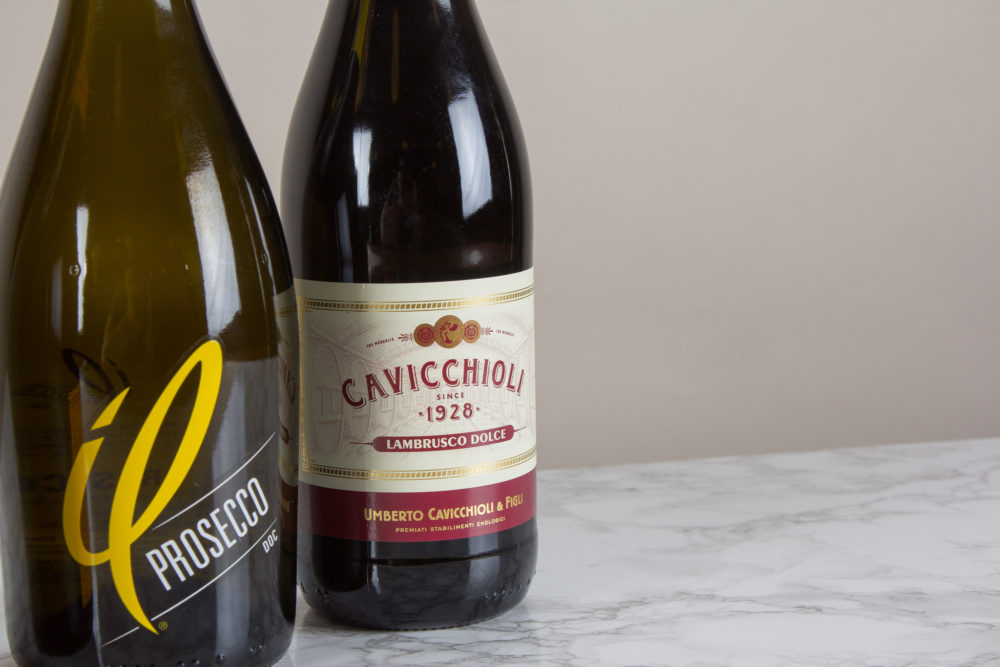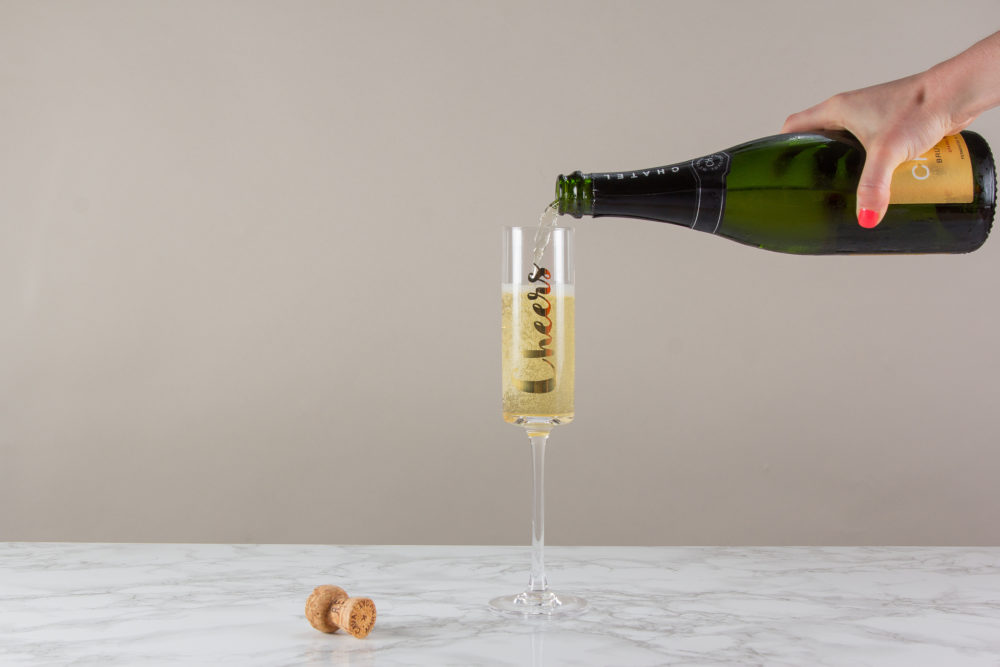

Many people use the word champagne to indiscriminately describe any wine with bubbles. But in reality, champagne accounts for only a fraction of sparkling wines sold worldwide. By definition, true champagne is only produced in the Champagne region of France. Different types of sparkling wine like prosecco, cava, crémant, moscato, and lambrusco comprise the rest of the market. And while each bears some likeliness to champagne (i.e., they all fizz, thanks to varying amount of carbon dioxide captured in the wine), there are distinct and important difference among them.
How Is Sparkling Wine Made? A Breakdown of Production Methods
Producers of sparkling wine go about producing and trapping carbon dioxide differently. Two approaches, the méthode traditionnelle (also called the méthode champenoise) and the Charmat method, are most common.

Méthode Traditionnelle
The méthode traditionnelle is the most meticulous and expensive sparkling wine making method, and it is the approach held in the highest esteem. It is a labor-intensive, highly delineated process that begins after harvest with the pressing of the grapes. In Champagne, the rules of the method stipulate that only the first two pressings may be used. This helps ensure the wine blends are made from juice that is naturally high in sugar and acidity. From there, the juice undergoes primary fermentation to convert the sugar to alcohol, producing still (i.e., not sparkling) base wines of single varietal and origin. Next, the winemaker decides which and how much of each base wine to combine to make a final blend for bottling. Base wines from various varietals, vineyards, and vintages may be combined to achieve a desired flavor and aroma profile.
Secondary Fermentation
To the final blend, the winemaker adds a sugar-yeast mixture called liqueur de tirage. The wine is then bottled and stoppered with a temporary cap. The liqueur de tirage instigates secondary fermentation in the bottle, which produces desirable carbonation and sediment. The longer the wine ages in the bottle with this sediment, called lees, the more complexity it typically develops. Non-vintage champagne must age a minimum of 15 months, while vintage champagnes age a minimum of three years.
Riddling and Dégorgement
As the bottles age, either a machine or a specialist known as a riddler systematically turns and slightly tips each bottle gradually over period of time, which drives the sediment to the neck of the bottle. During the next stage, dégorgement, the necks are frozen so that when the winemaker removes the temporary caps, the pressure of the carbon dioxide in the bottle forces the ice-hard sediment out through the mouth. Before corking the bottles and readying them for market, the winemaker often adds a mixture of wine and sugar called dosage to balance the now sparkling wine’s acidity. The amount of dosage added determines how sweet or dry a champagne is.
Charmat Method
A cheaper and faster carbonation process used extensively outside of Champagne is is the Charmat method. In this case, the sugar and yeast necessary to provoke secondary fermentation are added to the still base wine in large pressure tanks. Once carbonated, dosage is added in bulk and the wine is bottled. Wines produced according to the Charmat method, like prosecco, miss out on the benefits of aging in the bottle.
Sparkling wine production is not limited to the above described methods, however. The cheapest sparkling wines on the market, for instance, are generally force carbonated like soda. That means carbon dioxide is pumped into the still wine tanks and the resulting sparkling wine is bottled under pressure. The carbonation, in those cases, is not a product of fermentation.
Types of Sparkling Wine
Champagne
Within the EU, only sparkling wines produced in France’s Champagne region, northeast of Paris, can legally be labeled as champagne. Sparkling wines produced outside the EU sometimes bear the name champagne because they are not subject to the same legal restrictions.
The microclimates and soil of Champagne--its terroir--contribute to the distinct taste of champagne, as does its rigorous production method, previously discussed. Additionally, champagne producers may only use three grapes: pinot noir, chardonnay, and pinot meunier. Champagne is typically around 12% ABV and can be very dry, very sweet, or anywhere in between, depending on the dosage. From the driest (least residual sugar) to the sweetest (most residual sugar), the labeling scale is as follows:
- Brut Nature
- Extra Brut
- Brut - Dry
- Extra-Dry
- Dry (or Sec)
- Demi-Sec
- Doux
Champagne tends to be the priciest sparkling wine option in any store due to the cost, labor, and time involved in its production, the quality of its vineyards, and its reputation. Well-known champagne brands in the United States include Moet & Chandon, Dom Perignon, Bollinger, Taittinger, Veuve Clicquot, Piper-Heidsieck, and Pol Roger.
If you're splurging on champagne, make sure you are storing and serving it at the correct temperature. Our handy chart can help.
Crémant
Many French winemakers outside of Champagne also adhere to the méthode traditionnelle to make fine sparkling wines. But because they are not growing and producing in Champagne, we call their wines crémants. Crémants are commonly produced in Alsace, Burgundy, Jura, and the Loire Valley, and can be made from a wider range of grapes than champagne. Winemakers use pinot blanc, pinot gris, riesling, and chenin blanc, among many others, in addition to pinot noir and chardonnay.

Pétillant Naturel (a.k.a., Pét-Nat)
Pét-nats are champagne's rustic cousin. They can be made from red or white juice, and are unique in that they are made according to the méthode ancestrale--a production process that dates to 16th century Limoux, France. In the case of pét-nats, winemakers may use wild or commercial yeast to provoke fermentation. The biggest difference though, is that pét-nats are bottled during primary fermentation, before all of the sugar is converted to alcohol. That variable amount of leftover sugar is left to ferment in the bottle, with funky, unpredictable results. The wines are also sometimes unfiltered, lending them a cloudy appearance.
Cava
Spain’s answer to champagne is cava. It's a dry sparkling wine made primarily in the Catalonia region since the late 19th century. Cava producers use the méthode traditionnelle, which yields elegant, fine bubbles, and complexity from time spent on the lees. Cava differs from champagne in its reliance on native grape varietals like macabeo, parellada, and xarel-lo, though doses of pinot noir and chardonnay are often added to the final blend.
Prosecco
This Italian sparkling is a popular by-the-glass option on wine menus these days thanks to its affordability and approachability. Makers of prosecco follow the Charmat method using the prosecco grape (also called glera), a high-yield, neutral white varietal native to the Veneto region. Because it isn’t aged on lees, prosecco tends to be fruit forward; notes of melon, pear, and green apple are common. Also, because of its production method, the bubbles are larger and dissipate faster than champagne. Prosecco can be frizzante (semi-sparkling) or spumante (fully sparkling). A decent bottle can be had for as little as $12, making it a good option for mimosas and bellinis. That said, complex, higher-end proseccos from the Conegliano Valdobbiadene DOCG and Colli Asolani DOCG are available, some of which are made in the méthode traditionnelle.
Moscato d’Asti
Moscato is Italian for muscat, a wine grape variety notable for its strong perfume and long history. Scholars consider it the oldest known grape used for winemaking; the Greeks and Romans of the ancient Mediterranean almost certainly cultivated it. These days, in Italy’s Piedmont region, the finest, ripest moscato grapes become moscato d’Asti--a sweet, lightly sparkling white wine with an ABV of 5.5%. Moscato d’Asti is typically golden yellow and retains much of its namesake grape’s fruity qualities and intoxicating fragrance. Its low alcohol content, marked residual sugar, and subtle fizz make it an excellent session wine on warm days. It is also appropriate after dinner for or with dessert.

Lambrusco
Lambrusco, an effervescent red wine from Italy’s Emilia region, has a bad rap. That's mostly due to the offensively sweet, mass-produced examples that flooded the U.S. market in the 1970s and 80s. But now it’s now easier than ever to come by carefully made lambruscos of merit.
Lambrusco is available dry (ecco), off-dry (amabile), or sweet (dolce). They can be bright and rich with red fruit, funk, and musk. And because they tends toward high acidity, ecco and amabile versions pair well with fatty foods like pizza and the rich pasta, cheeses, and cured meats of northern Italy. As for the sparkle, small production lambrusco may be made according to the méthode ancestrale, described above, or thee Charmat method.
With all the sparkling wine options on the market, it's a shame to reach for the same old style every time you crave something bubbly. They next time you have a cause for celebration, consider reaching for one of these alternatives.





Leave a Comment